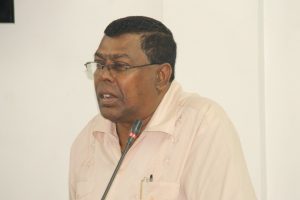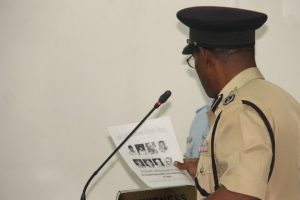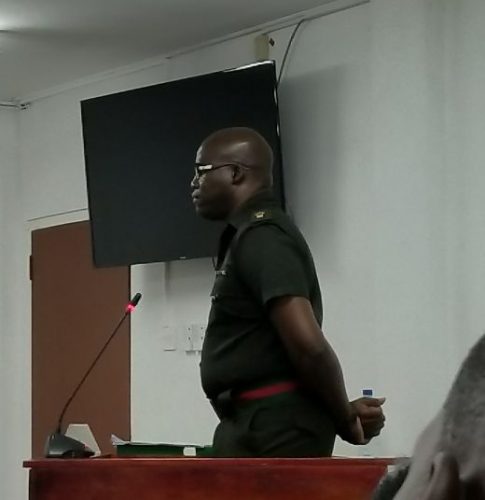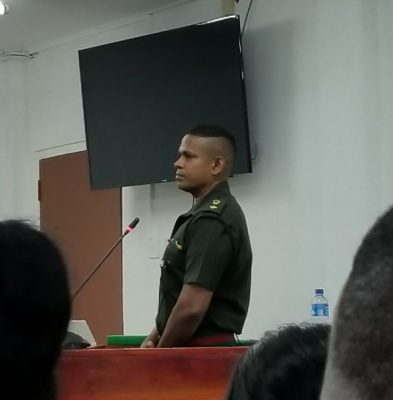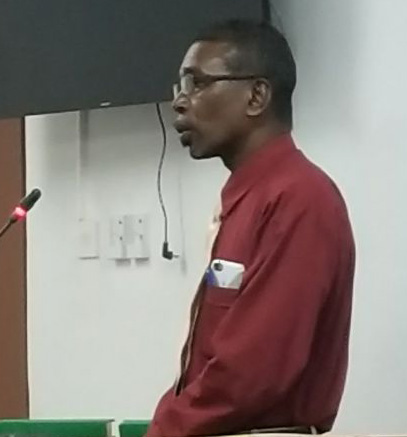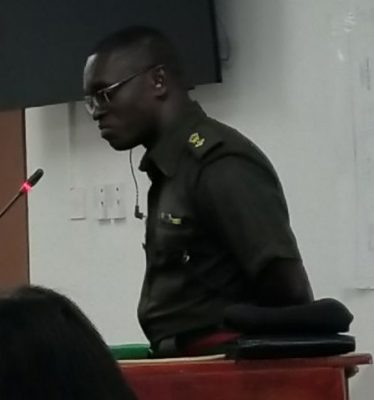Relatives and friends of those killed at Lindo Creek in 2008 rallying in support of justice for them yesterday.
Close to a decade after the Lindo Creek killings, a former policeman yesterday recounted the recovery of the charred remains of the eight miners at the crime scene.
Clensford Burnett, a Detective Sergeant at the time of the discovery, was the first witness when the public hearings of the Commission of Inquiry (CoI) into the killings began before Justice (Rtd) Donald Trotman at the Department of the Public Service, on Waterloo Street.
Initially scheduled to start on February 15th, the hearing was halted because witnesses did not show up but Trotman related yesterday that since then, the commission has held in-camera hearings, interviews, and even visited locations in Essequibo, where they were able to garner information from potential witnesses.
Burnt human bones and skulls had been discovered on June 21st, 2008 by Leonard Arokium, owner of the Lindo Creek mining camp. DNA tests done in Jamaica several years later confirmed that the remains had belonged to his son Dax Arokium, his brother Cedric and workers Compton Speirs, Horace Drakes, Clifton Wong, Lancelot Lee, Bonny Harry and Nigel Torres.
The eight men were mining for diamonds at the location when they met their gruesome deaths, sometime between June 9th and June 10th. After the miners were slaughtered, their bodies and belongings were burnt. They had reportedly had a ‘wash down’ (large find) yet there were no traces of any diamonds.
In his testimony, Burnett related that he, as part of a team of policemen, had visited the scene at Lindo Creek the day the brutal murders were reportedly uncovered by the owner of the camp site, where the miners were reportedly slain.
Burnett had also been a part of the team that travelled to Christmas Falls earlier that month on June 8th, 2008, when there was the report of the murder of Otis Fifee, called “Mud-Up”, a member of the Rondell ‘Fine Man’ Rawlins gang.
Rawlins has been implicated by the Joint Ser-vices—the Guyana Police Force and the Guyana Defence Force—in the Lindo Creek killings, but relatives have from the beginning expressed cynicism at this claim, some expressing the belief that it was the Joint Services that were behind the murders.
Burnett told the commission that on June 21st, the team journeyed to the interior location, taking a plane from Ogle to Kwakwani, then travelling by trail for about three hours using a Joint Services vehicle, before disembarking and walking west, for another four to five miles, “up and down through bushes” and “small creeks” to Lindo Creek.
They were led by members of the Joint Services, he said.
At the end of the journey, they encountered a clearing, about 117 feet in length and 108 feet in width, surrounding by trees, with a dredging operation set up near the south western side of the border.
Senior superintendents Thomas and Crawford were the most senior officers in the party.
There were two camps there, he recounted. The first, located on the southernmost side, was covered by a blue and green tarpaulin, and had a fireside, groceries and mechanical tools.
The next he described as appearing to be a “resting place” but unlike the first camp, this area was not covered.
The witness recalled that at the front of this camp, within the first 15 feet, there was a pile of charred remains, which was discovered to be human after checks uncovered skeletal bones, including limbs and part of a skull. He estimated that the heap was approximately one foot in height and eight feet in width.
But those were not the only things uncovered at the scene. Burnett revealed that after a search of the camp, they found a 7.62×35 calibre round and four 7.62x 39 spent shells, along with a sledgehammer, a Scotia Bank book, a battery operated watch, a birth certificate bearing the name “Barry Lloyd Patrick Harry,” a burnt passport, and a national identification card.
The items were photographed and Burnett later related that they were lodged at the Criminal Investigation Department when they returned later that day. He added that the next day he picked up the ammunition and spent shells, marked them, and handed them over to ballistic expert Sergeant Eon Jackson. The hammer, he said, was taken to the forensics lab. It is unclear what the results of the related analyses were, as Burnett said he was not made aware. He also could not say what happened to the other items that were found at the scene.
The remains
Burnett said that after the remains were discovered, he donned protective gear, scooped them up by hand, placed them on a polythene tarpaulin, and wrapped them. Four officers then fetched the remains back to the trail and they were transported to Kwakwani, where an undertaker from Lyken Funeral Parlour assisted with placing it onto a plane.
Dr Dawn Stewart, of Lyken and a mortician herself, appeared to testify at yesterday’s hearing.
Stewart physically identified Burnett as being one of the officers who was a part of the team that brought back the remains that day, after being asked to do so by CoI attorney Patrice Henry.
She related that the “lead mortuary help” on the day in question, now deceased, was sent to retrieve the remains of the miners after the parlour was contacted by the police force.
The remains were flown to Ogle and then transported to the funeral home, where they were kept until a few days later, when a post-mortem examination was scheduled.
Stewart explained that because of the condition of the remains, it was decided that DNA studies were needed and so it happened that the remains stayed in the custody of the parlour for four years before authorisation was given by the police for them to be released to the families at the conclusion of the investigations.
Stewart explained that she had visited CID and petitioned for eight coffins to be provided for the burial but was told only one was needed. After persisting however, she was able to acquire three coffins and the remains were split, entombed, and buried at the Le Repentir Cemetery.
On September 11th, 2012, the human remains were prepared for burial, and a service, organised by the parlour, was held for the one family that showed.
She related that one of the women present, who she recalled stating that her son had died, had indicated that their family had only been notified on the day of the burial, and presumed that the other families may not have been aware. However, the next day, Stewart said other families called to enquire and were informed about the proceedings.
Because they were not in receipt of the names of the deceased, and there was only one family present, Stewart said only two names were placed on the coffins prior to burial.
Asked if there was any advantage to having the remains buried against being stored, Stewart said remains are not usually kept refrigerated until the results for examinations have returned; rather, they are buried and then later retrieved if further investigations are required. She noted that although the police investigations were not through, they were not prepared to bury and retrieve.
The four years they kept the Lindo Creek murder remains, she said, is the longest the parlour has kept any remains in its 95 years of existence.
The scene revisited
Burnett had recalled that in July, 2008, the Lindo Creek camp was revisited with a team from Trinidad. They had come with their own helicopter, and samples were taken from the scene. Asked by Henry if he had heard from that team since, Burnett stated no.
Later on, he related, another visit was made with a team of Jamaican forensic officers. They reportedly took photos, and did further searches “deep into the area,” which turned up a wedding band, a belt head, and female clothing buried in the sand. He could not recall any other items.
The next time Burnett encountered the remains again was when the Jamaican team visited. The remains were uplifted from Lyken and transported to the Georgetown Public Hospital’s mortuary, where a pathologist on the team conducted an autopsy.
No family members were present for the examination, the results of which were not made known to Burnett.
Stewart had related that within the first two years, officers were called in approximately four times to take samples from the remains for testing.
The relatives
Winston Harry and Maureen Nurse-Harry, the father and widow of Bonny Harry, also took the stand yesterday.
The two both testified to last seeing the man in March, 2008, when his mother’s funeral was held.
Although Nurse-Harry testified to having received a monthly stipend from her husband during his time working the mines, she said that last time she received money from him was that March when he visited.
Asked if she was ever contacted by the police on the matter, she stated that shortly after she learnt of his death, police had visited her house making enquiries, but she had sent them away.
Her father-in-law had testified that the last time he saw Bonny Harry, he had given him a gun to take into Lindo Creek. The gun was reportedly licensed to the deceased, his father, and his brother.
He said that a few years ago a policeman came asking what he wanted to do with the remains and he explained that the question had irritated him because the remains were indistinguishable.
“…It nah gah mark. How you gon’ know is who own?” he stated. He related that he had heard the bones had been buried in Le Repentir but said he is not acquainted with any of the other families.
Harry also recalled once giving DNA samples to the police.
The next hearing of the CoI is scheduled for Tuesday, March 6th.
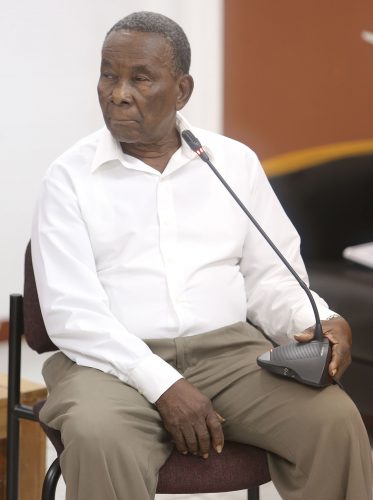
Winston Harry, father of Bonny Harry, testifying before the commission yesterday.
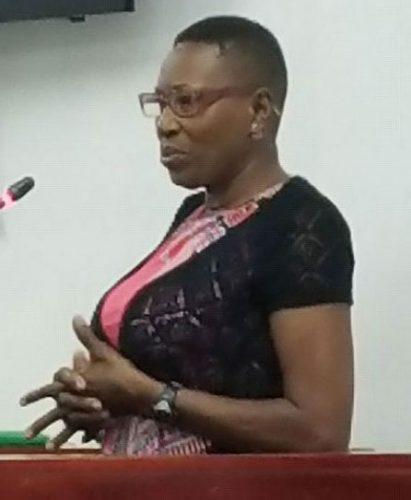
Maureen Nurse-Harry, widow of Bonny Harry, took the stand.
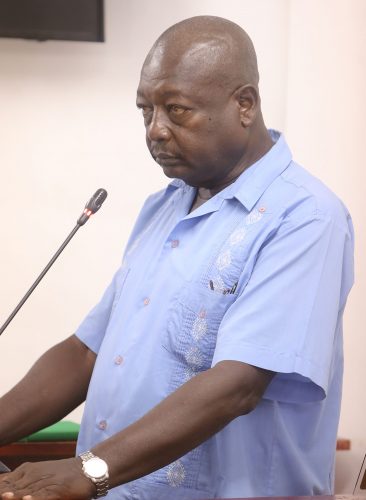
Retired police officer Clensford Burnett, who was in the Joint Services party that recovered the remains of the murdered miners.

Lyken Funeral Parlour mortician Dawn Stewart testifying.

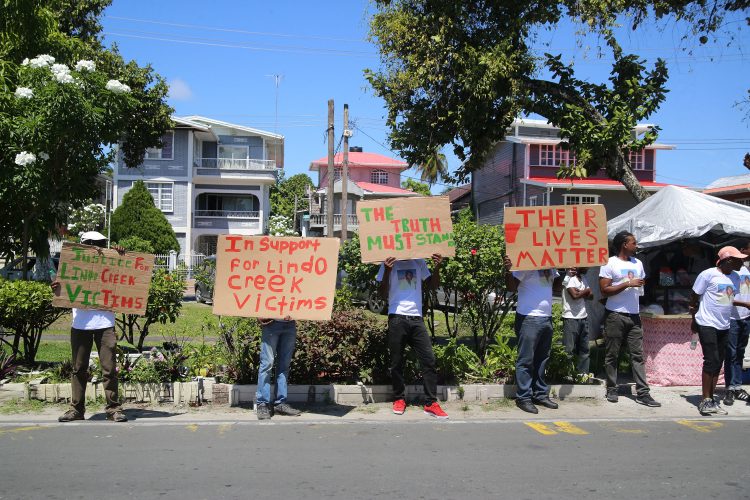
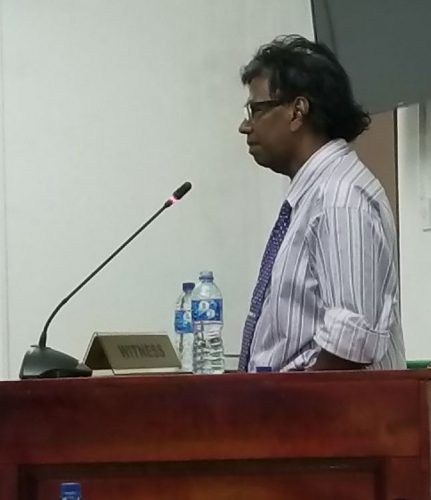
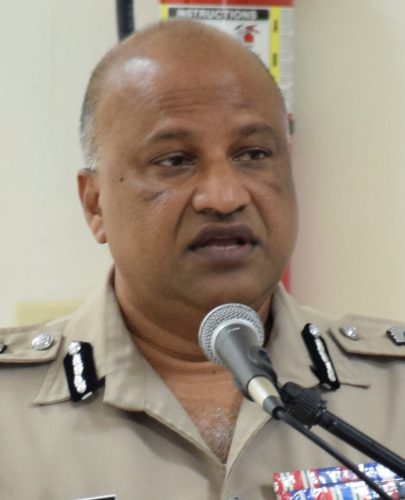
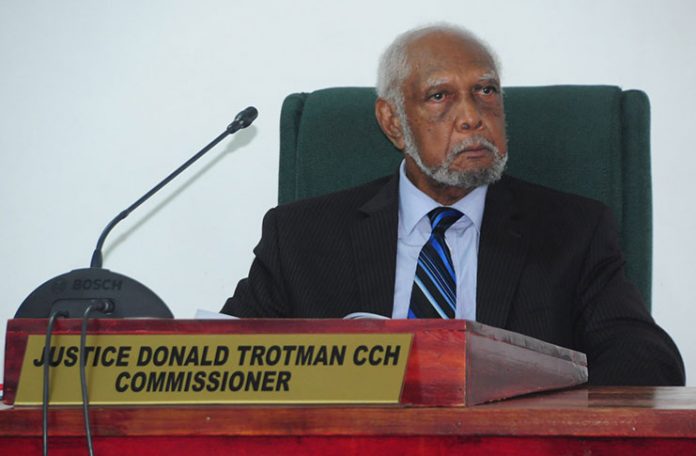


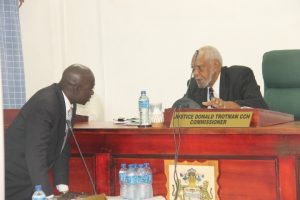
 Ronan is ???? reincarnated on GNI.
Ronan is ???? reincarnated on GNI.

